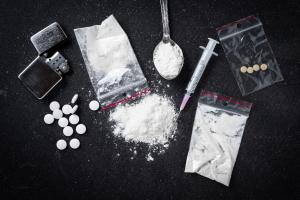Have you heard of the term ‘Day Zero’? Some of you might have heard of it back in 2018, when Cape Town, South Africa faced an unprecedented water shortage. The city had been through 3 years of drought and had failed to prevent or prepare for a water crisis with their outdated water infrastructure. In the first two years, when water levels started to decrease in dam reservoirs, their response was to call on its residents to be “water aware.” However, in 2017 the situation grew worse. The city started to restrict water use by limiting people’s consumption, at first to about 87 liters of water per person per day. Later, when the water level was close to the bottom of the dam, limits to around 49 liters a day per person were enacted. But the disaster didn’t come to an end. There still wasn’t enough rain. The dam was drying up quickly. Then experts came up with the scenario of ‘Day Zero.’ This day would be when the government would turn off the taps for most homes and businesses in the city to preserve the remaining water. If this happens, you cannot get water by simply turning on your tap. Instead, 2,000 communal water points would be set up in the city to provide water to people. The city set the ticking clock to April 12th, 2018, as the upcoming ‘Day Zero’.
Once the Day Zero clock began, there was a significant decline in agricultural use of water. In February 2018, the appointed date was put off until May 11th, after considering the water use patterns and the water levels in the dam. However, many people were still not getting on board with water preservation. Without public participation, the day could be closer at any time. Experts and the city council started talking about how things from every aspect of life will be affected when Day Zero arrives. Factories will have to stop running, hospitals and service centers will be closed most of the time, resulting in the loss of thousands of jobs. Water loss would impact not only citizens daily lives but also the city’s economy to a greater extent.
Realizing how serious and imminent the situation was, people started to act. In some interviews done back then, people said they were not flushing their toilets until they got really dirty. They were using baskets to capture run-off shower water and reuse it for toilet water. They were collecting rainwater, using it for washing dishes and cleaning the house. Restaurants and cafes used paper dishes and cups to save water. Sprinklers were turned off. Swimming pools were banned. Golf courses closed. People started challenges t0 see who could go the longest without washing their clothes. At last, city officials urged families to save up drinking water for emergencies. There were long lines at natural springs to get water.
In June of 2018, thankfully, it rained for the first time in four years. Still, people continued conserving water together. As a result, the dam levels rose, so the city officials could call off Day Zero indefinitely.
It seems like the prolonged dry season was a trigger for this unreal crisis. However, the city had already been facing water shortages since the 1990s, as a Cape Times newspaper headline declared on April 26, 1990 “City Will Run Out of Water in 17 years.” The city’s water supply was always highly dependent on rainfall. Its population has exploded since then, reaching 4.6 million people in 2020, with only a minimal increase in reservoir water storage in the same period.
Globally, more extreme droughts are happening in many regions. Turkey is one of the many countries that has faced severe drought recently. After several seasons of low rainfall, their reservoirs have reached the lowest water level in 15 years. After sparse rain in Mexico City in November 2020, the city’s authorities have already reduced water flow from reservoirs in the Cutzamla system, which provide one quarter of the city’s requirements. Many regions in Australia, China, Iran and countries in Africa are currently in their longest dry seasons, as well. Experts relate this irregular precipitation with global warming. In other parts of the world, storms and heavy downpours are also becoming more common too. This makes it hard for cities to manage and handle the increased water from these storms. In heavy rains, many old cities with old and outdated water infrastructure fail to save the water and they get flooded helplessly. Irregular precipitation is making it hard to predict the water cycle and prepare for it.
Human population has been using water from rivers and from underground sources for a long time. In the past, when we used this water and it lowered the water levels of reservoirs, rivers or aquifers (a body of permeable rock or sediment saturated with groundwater), seasonal rainfalls and snowfall would return the water levels back to its original height, so we could keep using the water at the same rate. However, current weather changes are making it hard to save water like before. To make things worse, the population in cities are exploding, which speeds up the water usage in a city and it makes it even harder for the water levels to keep up with the cities’ water usage. Unfortunately, this is happening not in just one country, but in all of them.
You could say then, ‘What about ocean water? Water covers most of the Earth.” Yes, 70% of the Earth’s surface is covered with sea water, which is water, but salt water. This means that we cannot directly use this water for everyday use. The current technology of water desalination, which turn salt water into fresh water, is very laborious and inefficient. It takes so much money and energy but produces only 1% of the annual water use of the entire human population, so it’s hard to assume that water desalination will rescue us right now.
Cape Town could overcome their water shortage crisis because of the united effort of all the businesses and houses in the city. Nowadays, many people around the world are realizing the danger of a water crisis and are trying to actually cut down their amount of water use. However as a matter of fact, the amount of water that people use daily in their work or home is only a small percentage of our entire water usage. Seventy percent of the world’s entire water usage is used in agriculture, 22 percent in the manufacturing industry, and the amount of water that people daily use takes up only 8 percent. You can assume that agriculture needs a lot of water because it is for growing the food that we eat. Even so, growing crops is not the biggest area that uses up water. As you can see in the water footprints images below, cows are a livestock that needs a huge amount of water to raise them, compared to other animals. To have one kilogram of beef, 15,000 liters of water is needed, which is more than three times required to get same amount of chicken (3,900 liters per kilo) and more than two times required to get same amount of pork (4,800 liters per kilo). This is because cows mainly feed on huge amount of grass, hay, and grains, which need a lot of water to grow. Avocados are also one food source that needs a large amount of water to grow. To produce 1kg of avocados, about 2,000 liters of water is needed. Petorca, a region that produces 60 percent of the avocados in Chile, has an arid environment and they use even more than 2,000 liters of water per kilogram. This depletes water for local people to use and makes the land even drier. How about manufacturing? In manufacturing, water is used in fabricating, processing, washing, diluting, cooling, or transporting a product. Factories that make chemicals, food, or paper all need huge amount of water to function. For instance, 2,500 liters of water is needed to make a T- shirt in a factory.
What about Korea? Do we also have a shortage of water? According to a report written by the Korea Meteorological Administration, precipitation last year in Korea was 1591.2mm, which was higher than usual, and more than double the average rainfall in the world, which is 990mm in a year. However, Korea also is not safe from a future water crisis. Even if the annual amount of rain is enough, it rains mostly in the summer, making it hard to save all the rainwater. In the rainy season, we have to let the rain flow out to the sea, in order to prevent floods. Also, unlike before when it was easier to predict the amount of precipitation, it is now getting harder to predict the weather and the amount of precipitation. Even this year, we had noticeably less rainfall in the summer and more than usual in the fall. Also, we have densely-populated cities using a lot of water.
To solve Korea’s water issue and prepare for the future, we have to first acknowledge that our problem is with the water management system, not with the amount of rain we get right now. We need to develop efficient ways to exploit agricultural water to get full use and benefit from it. Technology for water purification also needs to be developed. Water supply systems and water resource management need our attention, too.
Water desalination can be one solution to overcome extreme water shortage. However, experts say that this is not the right time for humans to rely on such technology. They believe there are other methods to solve our freshwater issues. What we should do now is to recognize water’s value, educate people of its importance and scarcity. Experts suggest raising the price of water to reflect its correct value. This means to raise the price of products and food that requires a lot of water while being produced. Factories that use a lot of water have to pay more accordingly. In this way, people will purchase less water-consuming items, dry regions will stop growing heavy water-consuming foods, and factories will come out with more efficient ways to exploit or reduce the water they need. We need to sincerely acknowledge that water is not infinite.
Water is not like any other resource. We will not survive without water, and it cannot be replaced by any other substitute. We still have time to slow down this crisis and prevent it. Now is the right time to discuss sustainable water usage and water saving to protect our future.
Kim MinJi alstbvj@g.hongik.ac.kr
<저작권자 © 홍익대영자신문사, 무단 전재 및 재배포 금지>





